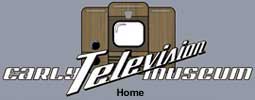Mechanical Television Mechanical TV StandardsThe following is from James Hawes:
In the late 1920s and early 30s, several mechanical TV transmission standards were being used. Here are the details on most of them:
|
 |
Mechanical Television Mechanical TV StandardsThe following is from James Hawes:
In the late 1920s and early 30s, several mechanical TV transmission standards were being used. Here are the details on most of them:
|